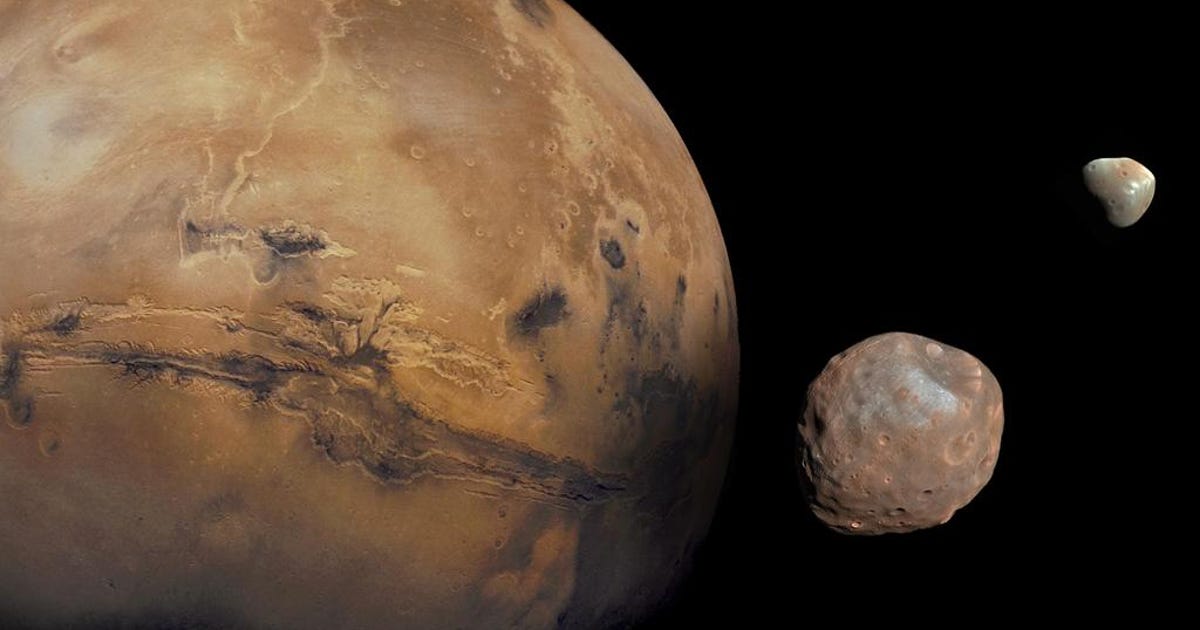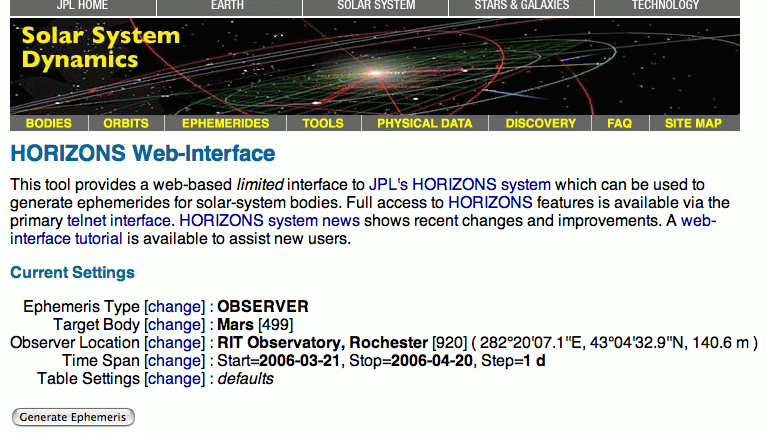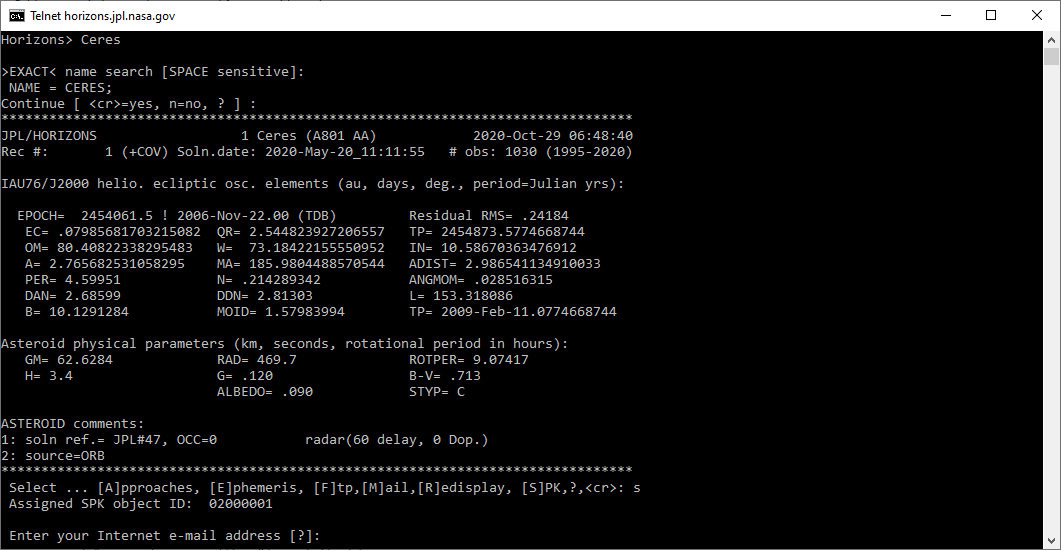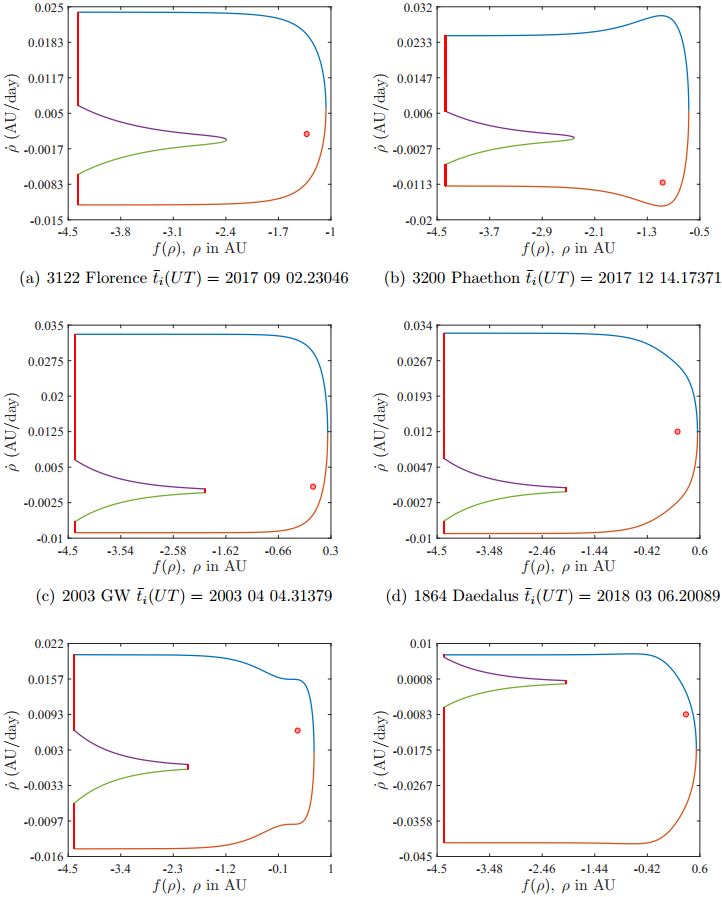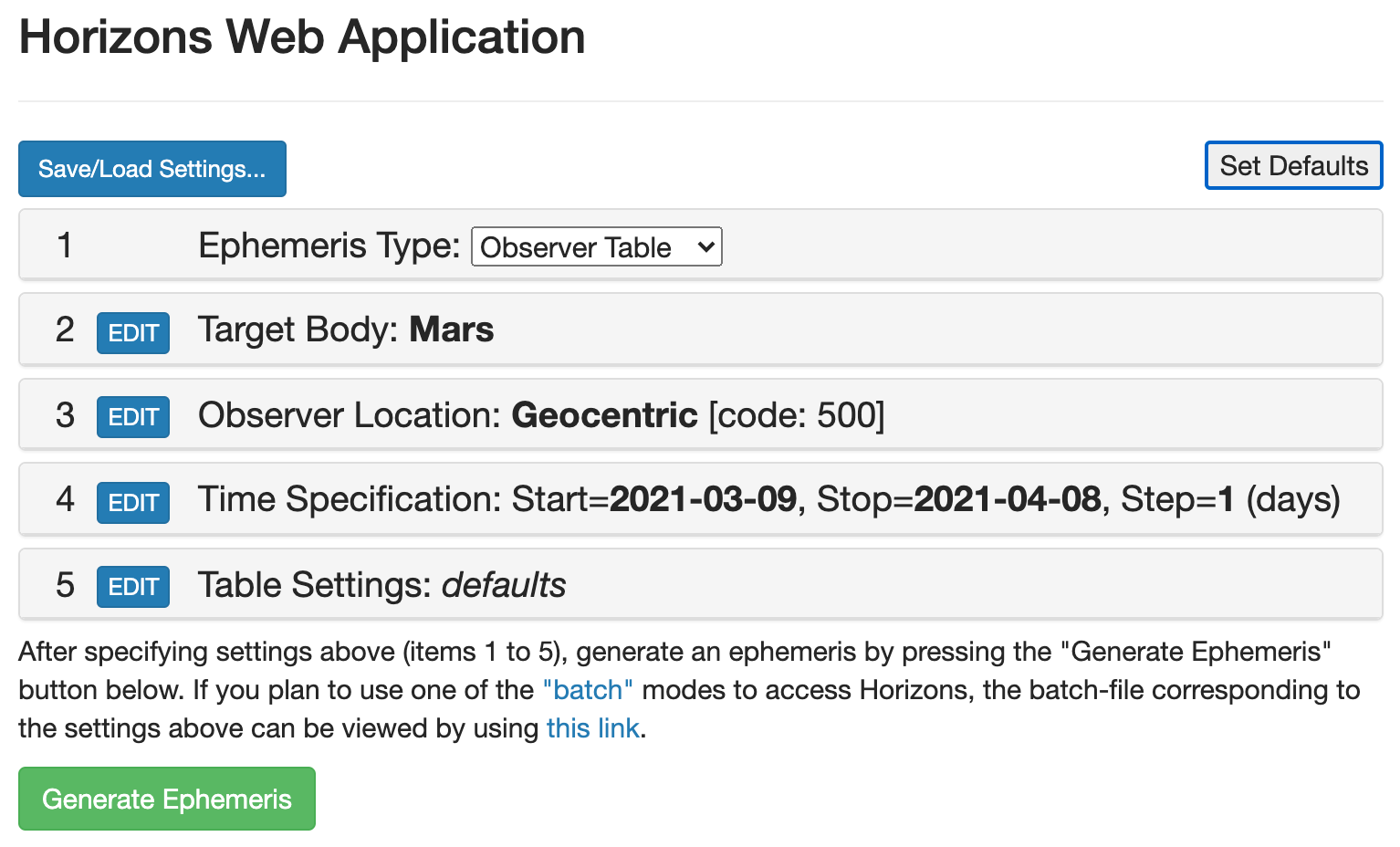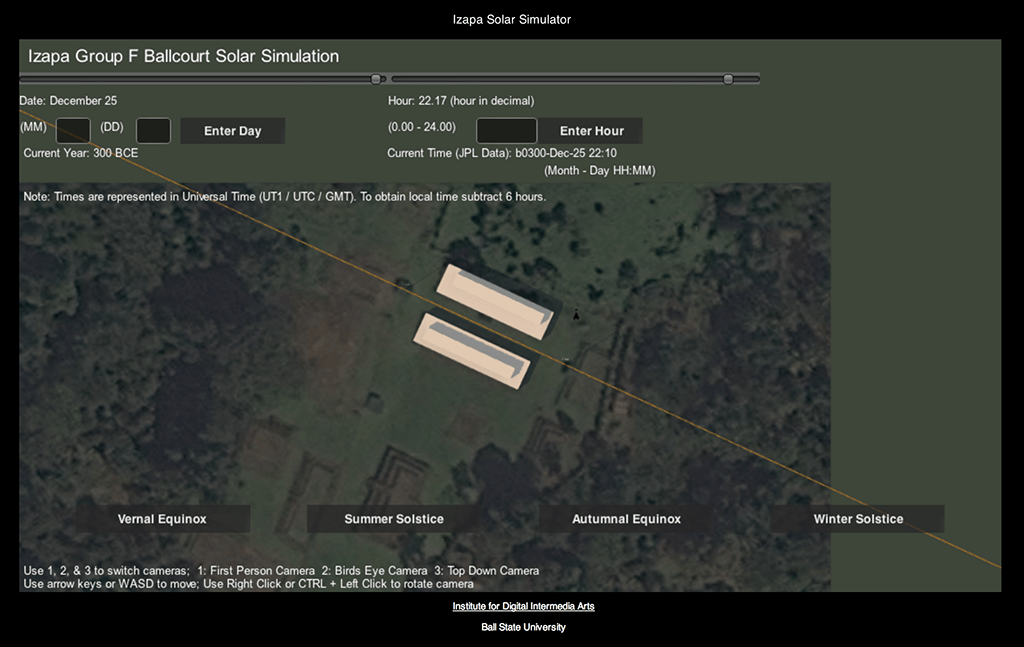
Where are we? Or: Computing our position in the Solar System | by Thomas Albin | Space Science in a Nutshell | Medium

Michele Bannister on Twitter: "Kicking off at Day 2 of #SSSCSprint, with Jon Giorgini outlining the details on JPL's Horizons (https://t.co/SH04606Rm5) and how it will deal with LSST https://t.co/qSwLk9ZicW" / Twitter

Eric Holthaus on Twitter: "The Tesla Roadster, now in solar orbit, has been officially logged as a celestial object by NASA: https://t.co/bDz2zFWdIc https://t.co/CEVjBZXeKH" / Twitter

(A) Earth and Venus' orbits and their positions on 1 January for the... | Download Scientific Diagram

ToughSF on Twitter: "Catch an asteroid! @HopDavid41 expands on just how easy it is to relocate Near-Earth Asteroids into a closed orbit around our planet. There are hundreds to thousands of 100-1000

An animation to explain the (apparent) retrograde motion of Mars, using actual 2020 planet positions - YouTube

The argument of pericenter (top) and orbital eccentricity (bottom) of... | Download Scientific Diagram







